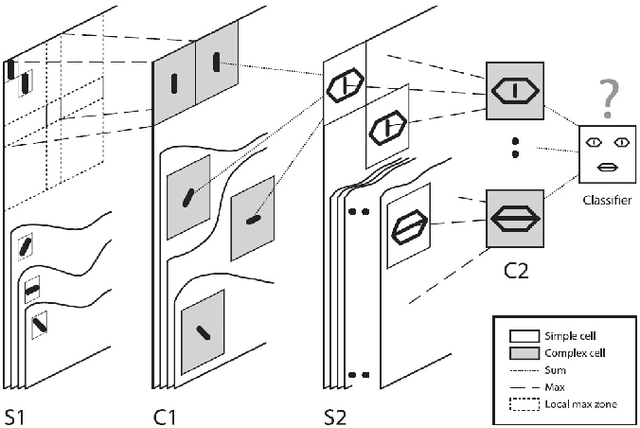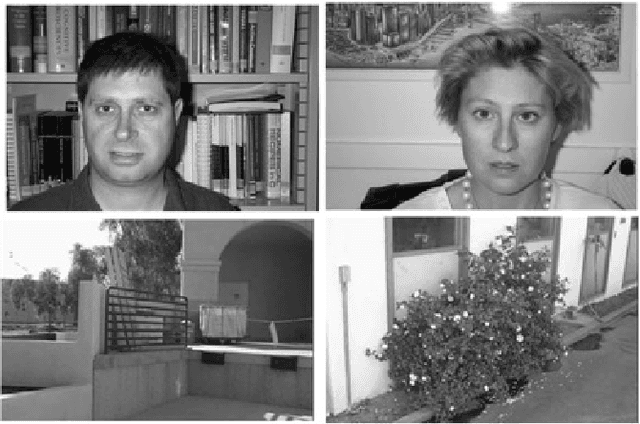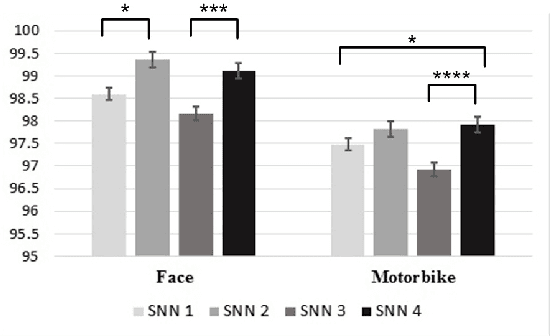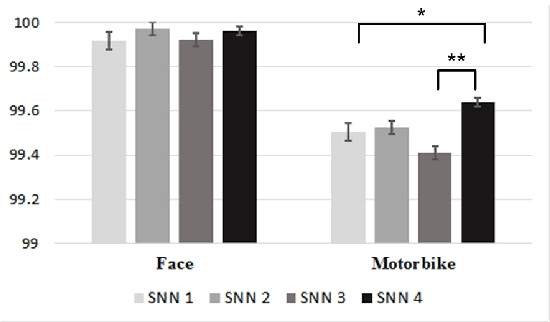Acquisition of Visual Features Through Probabilistic Spike-Timing-Dependent Plasticity
Paper and Code
Nov 09, 2016



The final version of this paper has been published in IEEEXplore available at http://ieeexplore.ieee.org/document/7727213. Please cite this paper as: Amirhossein Tavanaei, Timothee Masquelier, and Anthony Maida, Acquisition of visual features through probabilistic spike-timing-dependent plasticity. IEEE International Joint Conference on Neural Networks. pp. 307-314, IJCNN 2016. This paper explores modifications to a feedforward five-layer spiking convolutional network (SCN) of the ventral visual stream [Masquelier, T., Thorpe, S., Unsupervised learning of visual features through spike timing dependent plasticity. PLoS Computational Biology, 3(2), 247-257]. The original model showed that a spike-timing-dependent plasticity (STDP) learning algorithm embedded in an appropriately selected SCN could perform unsupervised feature discovery. The discovered features where interpretable and could effectively be used to perform rapid binary decisions in a classifier. In order to study the robustness of the previous results, the present research examines the effects of modifying some of the components of the original model. For improved biological realism, we replace the original non-leaky integrate-and-fire neurons with Izhikevich-like neurons. We also replace the original STDP rule with a novel rule that has a probabilistic interpretation. The probabilistic STDP slightly but significantly improves the performance for both types of model neurons. Use of the Izhikevich-like neuron was not found to improve performance although performance was still comparable to the IF neuron. This shows that the model is robust enough to handle more biologically realistic neurons. We also conclude that the underlying reasons for stable performance in the model are preserved despite the overt changes to the explicit components of the model.
 Add to Chrome
Add to Chrome Add to Firefox
Add to Firefox Add to Edge
Add to Edge